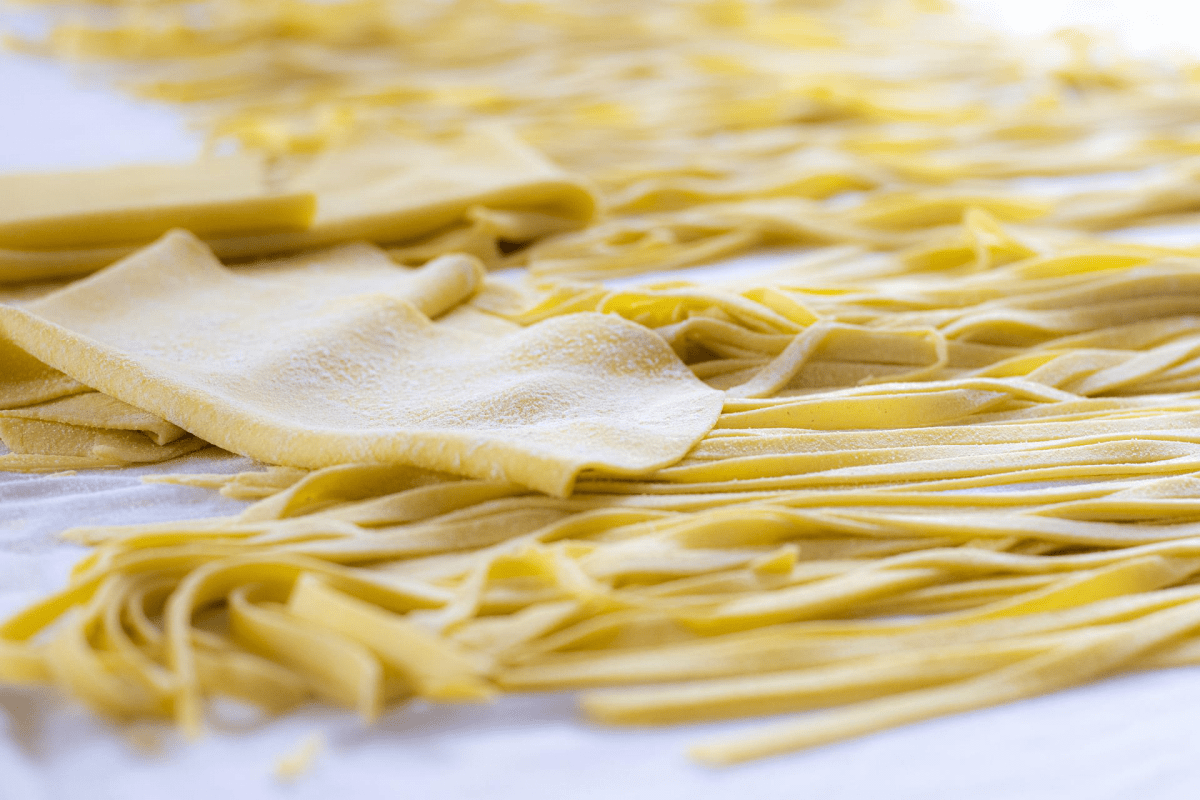Italian pasta: a millenary tradition
Dear Insideaters, if we had to play a game and if I asked which are the most famous homemade pasta shapes in Italy, which ones would you name? We at Insideat come up with quite a few: tagliatelle, fettuccine, orecchiette, cavatelli and gnocchetti. On second thoughts, there are also pappardelle, trofie, lagane, fusilli, maltagliati, tagliolini, pici, scialatielli, spaghetti alla chitarra and pizzoccheri. It is a very long list indeed!
We have not considered stuffed pasta. So, let’s play again: what are the stuffed pasta you know? We will help you, because here too there is plenty of choice: ravioli, tortellini, plin, agnolotti, cappelletti and many others, all different and all equally delicious.
What richness is this vastness of formats for Italy? Each region has its own specialties, almost every city has its own typical shape and often even in the same city there are more than one typical pasta shape. How much creativity has been expressed over the centuries in Italian families, pasta factories and restaurants, simply starting with a little flour mixed with water or eggs?
It’s a question of secular history, even millenary, if we think that pasta prepared with water and flour was prepared back in ancient Greece and Magna Graecia. The Greeks called laganon the hand-made pasta, a term that later became laganum in Latin and has come down to us as lagana (in central Italy), laina (in Lazio and Campania), laiena (in Puglia and Salento) and lasagna.
Given these ancient origins, it is then clear that we absolutely must not make the mistake of thinking that pasta is only “Italian” or that Italians or Greek or Arab ancestors even invented it. There are hundreds of types of pasta all over the world, think of the tradition of Chinese stuffed pasta, Japanese udon, Russian ravioli and Polish pierogi. We would be guilty of presumption and perhaps even dullness if we did not accept the idea that the different stories of these protagonists of the world tables did not develop independently of each other, but always with great success.
In short, there is no cuisine in the world that does not include some type of pasta, but one thing is certain, that Italians have put it at the center of their cuisine, creating an enormous culinary tradition around pasta and an infinite list of recipes that are brought to the table every day. Italian first courses always include pasta and even when for reasons of time, laziness or taste they have to choose to eat only one dish per meal, in most cases it will be pasta.
And we haven’t talked about dry pasta! Maybe we’ll do it another time here on the Insideat blog.

Homemade Italian pasta with water and flour or with egg, semolina or flour.
Italian pasta is good in every way and there are different types: a lighter version made with a mixture of water and flour, bronze-drawn dry pasta, a particular type of rough and porous pasta, or the classic egg pasta, more consistent.
However, there are rules or better practices that can help the pasta maker to choose the right recipe and the right ingredients:
- Semolina or flour: re-milled durum wheat semolina is generally used in central and southern Italy; it is perfect for orecchiette and cavatelli, but also for dry pasta such as spaghetti, linguine, rigatoni, paccheri, penne, fusilli, etc., that is, for all doughs prepared with water. Soft wheat flour (type 00, 0, 1, 2, Wholemeal) is used instead for hand-peeled pasta and cut into strips (tagliatelle, pappardelle, tagliolini, fettuccine, etc.), or for stuffed pasta such as ravioli, these doughs are almost always made with eggs.
- Water or eggs: water is used above all for small, non-stuffed fresh pasta (think of fresh pasta from southern Italy), as well as for dried drawn semolina pasta. Eggs, on the other hand, are used in hand-rolled and stuffed pasta, that is, in all doughs that need elasticity and a little color (yellow-fleshed eggs are used).
Insideaters, pasta is a serious theme but also a great fun. For those of you who haven’t done it yet, try your hand at it, you will eat something really genuine and you will be proud to have done it yourself.
If you want to experience an immersive experience in Rome, preparing with us the real homemade Italian pasta (fettuccine and ravioli) and an excellent tiramisu, you can join one of our Pasta, Ravioli and Tiramisù Class at this link.
If you have less time available, you can choose the 1 hour pasta class at this link, in which we will prepare excellent fettuccine to be seasoned and enjoyed with the best fresh Italian sauces in just one hour.
On our YouTube channel you will find the recipe and the whole procedure to prepare orecchiette to perfection and to serve them with turnip greens in the classic Apulian recipe. Here is a video to prepare egg fettuccine, in case you are unable to reach us in Rome to prepare them together.
We are waiting for you, Insideaters!












